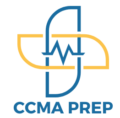Embarking on the journey to become a medical assistant in North Dakota is exciting and achievable.
- Education and training: Discover the educational pathways and training programs.
- Certification requirements: Learn about crucial certifications to enhance your career prospects.
- Job readiness: Gain insights on skills and practical steps to enter the job market successfully.
Unlock the steps on how to become a medical assistant in North Dakota today.
- Understanding the Role of a Medical Assistant
- Educational Requirements and Certification
- Finding the Best Medical Assistant Programs Near You
- Licensing Requirements in North Dakota
- Clinical Skills and Training
- Preparing for the Job Market
- Advancement Opportunities and Continuing Education
- Salary Expectations and Career Outlook
- Resources and Support Networks
- Looking for Medical Assistant Information On States Bordering North Dakota?
- Conclusion
Understanding the Role of a Medical Assistant
Medical assistants play an indispensable part in the healthcare system. They bridge the gap between patients and healthcare providers by ensuring smooth and efficient operation within medical settings.
Key Responsibilities
Administrative Duties:
- Scheduling Appointments: Efficiently manage the physician’s calendar and patient appointments.
- Patient Records: Maintain accurate patient information and update medical records as necessary.
- Medical Billing and Coding: Handle insurance documentation, billing procedures, and coding for medical services.
Clinical Duties:
- Patient Interaction: Take medical histories and record vital signs.
- Assisting Physicians: Prepare patients for examinations, assist during procedures, and manage instruments.
- Clinical Procedures: Administer medications under physicians’ guidance, perform basic laboratory tests, and handle wound care.
Essential Skills
To thrive as a medical assistant, you need a combination of soft and technical skills:
- Communication: Strong verbal and written skills to interact with patients and healthcare professionals.
- Attention to Detail: Accuracy is crucial when recording patient information and performing clinical tasks.
- Organizational Abilities: Multitasking and managing time efficiently to balance administrative and clinical responsibilities.
Medical assistants work in various healthcare settings, including hospitals, outpatient care centers, and private practices. Their role is dynamic and patient-oriented, fostering a rewarding career for those passionate about healthcare.
Educational Requirements and Certification
Basic Educational Pathway
You must meet certain educational benchmarks to start your career as a medical assistant in North Dakota:
- High School Diploma or GED: This is the fundamental requirement before pursuing further specialized education.
Accredited Medical Assisting Programs
After obtaining your diploma or GED, enrolling in an accredited medical assisting program is essential. North Dakota offers several accredited institutions that provide comprehensive training:
- Classroom Instruction: Courses include anatomy, medical terminology, pharmacology, and medical law and ethics.
- Clinical Training: Practical experience through labs and externships, where you apply what you’ve learned in a real-world setting.
Accreditation by organizations like the Commission on Accreditation of Allied Health Education Programs (CAAHEP) or the Accrediting Bureau of Health Education Schools (ABHES) ensures the program meets industry standards. It also smooths your path to certification.
Certification Pathways for Medical Assistants
Achieving certification as a medical assistant enhances your credibility and job prospects. There are several respected certification pathways:
- Certified Medical Assistant (CMA): Offered by the American Association of Medical Assistants (AAMA). Requirements include graduating from an accredited program and passing a comprehensive exam.
- Registered Medical Assistant (RMA): Provided by American Medical Technologists (AMT), this certification also requires completion of an accredited program or equivalent professional experience and passing an exam.
- National Certified Medical Assistant (NCMA): Issued by the National Center for Competency Testing (NCCT), candidates must meet educational or experiential requirements and pass an examination.
These certifications validate your competence, increase your employability, and often lead to better salaries and career opportunities.
Finding the Best Medical Assistant Programs Near You
Criteria for Choosing a Program
Accreditation: Ensure the program is accredited by CAAHEP or ABHES.
Curriculum: Look for a program that thoroughly covers both administrative and clinical skills.
Hands-On Training: Externships and practical training are indispensable for gaining real-world experience.
Flexibility: Choose a program that fits your schedule, whether it’s full-time, part-time, or online.
Top Programs in North Dakota
North Dakota boasts several reputable medical assistant programs. By selecting a program close to you, you can ease the transition into the healthcare field while balancing other commitments.
Search Tools:
Many online tools and search engines can help you find the best program based on location, tuition costs, and accreditation status.
Licensing Requirements in North Dakota
North Dakota does not mandate specific licensing for medical assistants. However, national certification is highly recommended to improve job prospects and demonstrate competency to potential employers.
Benefits of Certification
- Increased Employability: Certified medical assistants often have a competitive edge in the job market.
- Professional Development: Certification demonstrates a commitment to the profession and continuous improvement.
- Higher Salaries: Employers frequently offer better compensation to certified professionals.
Certification Maintenance
Staying certified involves meeting continuing education requirements and renewing certifications periodically. This ensures your knowledge remains current with evolving medical practices and technologies.
This version of the article is optimized for clarity, coherence, and SEO effectiveness, aiming to provide comprehensive and actionable guidance for readers interested in becoming medical assistants in North Dakota.
Clinical Skills and Training
Core Clinical Skills
As a medical assistant, you need to master several key clinical skills to perform effectively in a healthcare setting:
- Vital Signs Measurement: Accurately take and record patients’ blood pressure, pulse, temperature, and respiration rates.
- Patient Interaction: Obtain medical histories and provide patient instructions for procedures or treatments.
- Clinical Procedures: Administer injections, draw blood, change dressings, and perform basic lab tests.
- Assisting Physicians: Prepare examination rooms, sterilize medical instruments, and assist during examinations and minor surgeries.
Hands-On Training
Hands-on training is crucial for developing clinical skills. Accredited programs typically provide this through externships or practicums, allowing you to work in real medical environments. Here, you can apply classroom knowledge in practice, hone your skills, and gain invaluable experience under the supervision of seasoned healthcare professionals.
- Externships: Often part of the curriculum, externships place you in a healthcare setting where you’ll perform various medical tasks. This experience not only boosts your confidence but also enhances your resume.
- Lab Sessions: Practical labs during your education will help you become comfortable with medical equipment and procedures.
Preparing for the Job Market
Crafting a Strong Resume
Create a compelling resume that highlights your education, certifications, and hands-on experience:
- Include Relevant Information: Clearly state your medical assistant credentials, the accredited program you graduated from, and any certifications you hold (e.g., CMA, RMA).
- Highlight Experience: Detail your externship experiences, emphasizing clinical skills you’ve mastered.
- Professional Format: Use a clean, professional layout. Bullet points can effectively showcase your skills and experience.
Interview Preparation
Prepare thoroughly to ace your interviews:
- Practice Common Questions: Familiarize yourself with typical interview questions for medical assistants, such as your experience with patient care or how you handle stressful situations.
- Showcase Skills: Demonstrate your clinical and administrative skills through specific examples from your externship or past jobs.
Job Search Strategies
Leverage multiple avenues to uncover job opportunities:
- Local Job Boards: Check hospital and clinic websites regularly for openings.
- Professional Networks: Join medical assistant associations like AAMA or AMT for networking opportunities.
- Job Fairs: Attend healthcare job fairs to meet potential employers.
- Online Platforms: Utilize job search websites and professional networking sites to find listings and connect with recruiters.
Advancement Opportunities and Continuing Education
Specialization and Further Education
Advancing your career as a medical assistant often involves further specialization or education:
- Specializations: Consider focusing on areas such as podiatry, ophthalmology, or cardiology. Specializations can lead to higher salaries and more job opportunities.
- Higher Education: Pursuing an associate degree in healthcare administration or nursing can open doors to supervisory roles or new healthcare careers.
Continuing Education
Continued learning is essential for keeping your skills up to date:
- Certifications: Maintain your certification by fulfilling continuing education requirements. This often involves taking courses related to medical advancements or new technologies.
- Workshops and Seminars: Participate in industry workshops and seminars to stay informed about the latest trends and best practices in healthcare.
Salary Expectations and Career Outlook
Salary Expectations
The salary for medical assistants in North Dakota is competitive, with variations based on experience, location, and specialization:
- Entry-Level Salary: Typically starts around $28,000 annually.
- Average Salary: The median annual salary is approximately $35,000.
- Experienced Professionals: With experience and specialization, salaries can reach up to $40,000 or more.
Career Outlook
The demand for medical assistants is growing, offering a positive career outlook:
- Job Growth: According to the U.S. Bureau of Labor Statistics, the employment of medical assistants is expected to grow by 19% from 2019 to 2029.
- Healthcare Demand: The increasing need for healthcare services, driven by an aging population, ensures a steady demand for skilled medical assistants.
Resources and Support Networks
Professional Organizations
Joining professional organizations can provide you with numerous benefits:
- AAMA: The American Association of Medical Assistants offers certification, continuing education, and networking opportunities.
- AMT: American Medical Technologists (AMT) provide valuable resources for certification and professional development.
- NHA: The National Healthcareer Association supports medical assistants with certification and career resources.
Study and Preparation Resources
Prepare for certification exams with these resources:
- Study Guides: Comprehensive guides that cover exam content in detail.
- Practice Exams: Simulated exams to test your knowledge and readiness.
- Online Courses: Interactive courses that provide in-depth training and practice.
Local Support Networks
Engage with local study groups and professional networks:
- Study Groups: Join or form study groups with fellow students or professionals preparing for certification exams.
- Networking Events: Attend events hosted by local healthcare organizations to connect with peers and potential employers.
Looking for Medical Assistant Information On States Bordering North Dakota?
In addition to North Dakota, we suggest looking for schools in nearby states.
- How to Become A Medical Assistant in Minnesota
- How to Become A Medical Assistant in South Dakota
- How to Become A Medical Assistant in Montana
- How to Become A Medical Assistant in Nebraska
- How to Become A Medical Assistant in Iowa
Conclusion
Embarking on a career as a medical assistant in North Dakota can be incredibly rewarding. By following these steps—from gaining the necessary education and certification to acquiring practical experience—you’ll be well on your way to a fulfilling career in healthcare. Start exploring accredited programs and preparing for certification to take the first step towards becoming a medical assistant today.

